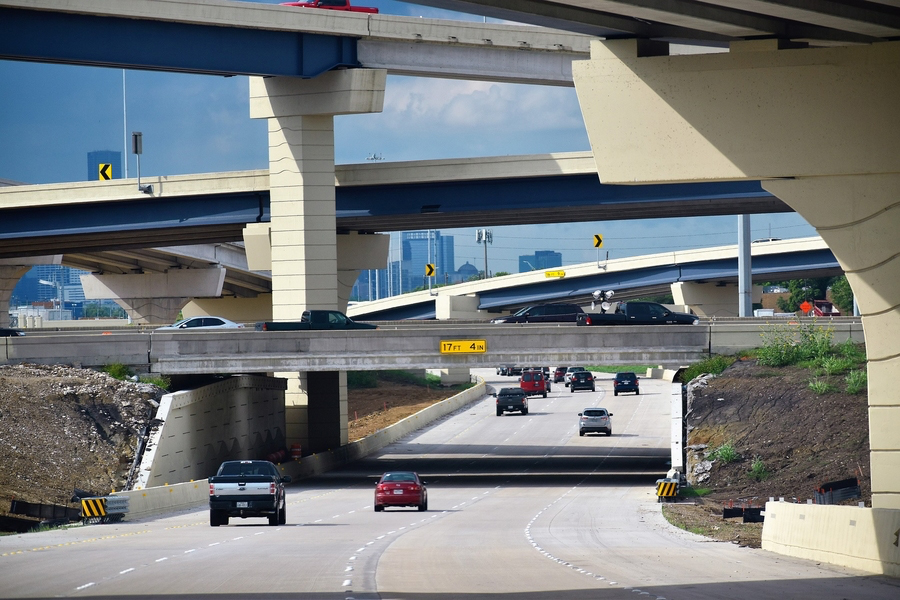A new study by MIT Concrete Sustainability Hub (CSHub) researchers shows that the annual greenhouse gas (GHG) emissions of all construction materials used in the U.S. pavement network are 11.9-13.3 megatons, equivalent to the output of a gasoline-fueled passenger vehicle logging 30 billion miles. As roads are built, repaved, and expanded, new approaches and thoughtful material choices are necessary to dampen their carbon footprint.

The CSHub researchers found that, by 2050, mixtures for pavements can be made carbon-neutral if industry and governmental actors help to apply a range of solutions—like carbon capture—to reduce, avoid, and neutralize embodied impacts. (A neutralization solution is any compensation mechanism in the value chain of a product that permanently removes the global warming impact of the processes after avoiding and reducing the emissions.) Furthermore, nearly half of pavement-related GHG savings can be achieved in the short term with a negative or nearly net-zero cost.
Led by CSHub Deputy Director Hessam AzariJafari, the research team closed gaps in practitioners’ understanding of the impacts of pavement decisions by developing a dynamic model quantifying the embodied impact of future materials demand for the U.S. road network. The team first split the U.S. road network into 10-mile (about 16 kilometer) segments, forecasting the condition and performance of each. They it developed a pavement management system model to create benchmarks helping to understand the current level of emissions and the efficacy of different decarbonization strategies.
This model considered factors such as annual traffic volume and surface conditions, budget constraints, regional variation in pavement treatment choices, and pavement deterioration. The researchers also used a life-cycle assessment to calculate annual state-level emissions from acquiring pavement construction materials, considering future energy supply and materials procurement.
ACTIONS, CONSEQUENCES
The team considered three scenarios for the U.S. pavement network: A business-as-usual scenario in which technology remains static; a projected improvement scenario aligned with stated industry and national goals; and, an ambitious improvement scenario that intensifies or accelerates projected strategies to achieve carbon neutrality.
If no steps are taken to decarbonize pavement mixtures, the team projected that GHG emissions of construction materials used in the U.S. pavement network would increase by 19.5 percent through 2050. Under the projected scenario, there were estimated embodied impact reductions of 38 percent for concrete and 14 percent for asphalt by 2050.
The keys to making the pavement network carbon neutral by 2050 lie in multiple places. Fully renewable energy sources should be used for pavement materials production, transportation, and other processes. The federal government must contribute to the development of these low-carbon energy sources and carbon capture technologies, as it would be nearly impossible to achieve carbon neutrality for pavements without them. Additionally, increasing pavements’ recycled content and improving their design and production efficiency can lower GHG emissions to an extent. Still, neutralization is needed to achieve carbon neutrality.
Making the right pavement construction and repair choices would also contribute to the carbon neutrality of the network. For instance, concrete pavements can offer GHG savings across the whole life cycle as they are stiffer and stay smoother for longer, meaning they require less maintenance and have a lesser impact on the fuel efficiency of vehicles.
Concrete pavements have other use-phase benefits including a cooling effect through an intrinsically high albedo, meaning they reflect more sunlight than regular pavements. Therefore, they can help combat extreme heat and positively affect the earth’s energy balance through positive radiative forcing, making albedo a potential neutralization mechanism.
At the same time, a mix of fixes, including using concrete and asphalt in different contexts and proportions, could produce significant GHG savings for the pavement network; decision-makers must consider scenarios on a case-by-case basis to identify optimal solutions.
In addition, it may appear as though the GHG emissions of materials used in local roads are dwarfed by the emissions of interstate highway materials. However, the study found that the two road types have a similar impact. In fact, all road types contribute heavily to the total GHG emissions of pavement materials in general. Therefore, stakeholders at the federal, state, and local levels must be involved if our roads are to become carbon neutral.
TWISTS AND TURNS
The path to pavement network carbon-neutrality is, therefore, somewhat of a winding road. It demands regionally specific policies and widespread investment to help implement decarbonization solutions, just as renewable energy initiatives have been supported. Providing subsidies and covering the costs of premiums, too, are vital to avoid shifts in the market that would derail environmental savings.
When planning for these shifts, public and private stakeholders must recall that pavements have impacts not just in their production, but across their entire life cycle. As pavements are used, maintained, and eventually decommissioned, they have significant impacts on the surrounding environment.
The study was published in the International Journal of Life Cycle Assessment. In addition to Azari Jafari, the authors include MIT Department of Civil and Environmental Engineering Professor Fengdi Guo; MIT Climate and Sustainability Consortium Executive Director Jeremy Gregory; and, MIT CSHub Director Randolph Kirchain.